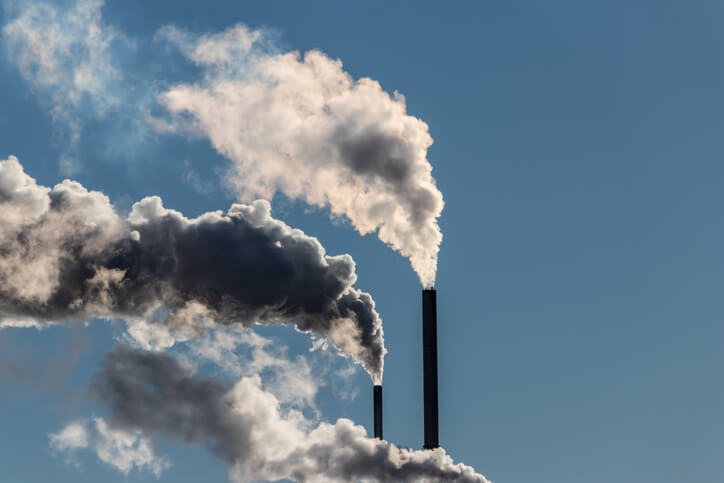Climate change is one of the biggest problems we face, caused by the buildup of carbon dioxide and other greenhouse gases in the atmosphere. These gases trap heat, contributing to global warming, melting ice caps, rising sea levels, and extreme weather events. Despite international agreements and policies to reduce emissions, annual carbon dioxide emissions continue to rise. Renewable energy and sustainable behavior are essential, and scientists and engineers are increasingly using carbon capture technology to prevent and reverse climate change.
Why Carbon Capture Matters
Capturing carbon dioxide at its source prevents it from being released into the atmosphere. Industries such as power generation, cement production, and chemical manufacturing release these emissions. Once captured, the carbon dioxide can be stored in geological formations or exploited commercially. Neutralizing emissions from fossil fuels and heavy industry prevents carbon emissions from contributing to global warming. Carbon capture complements renewable energy by addressing emissions from hard-to-remove sources.
Carbon Capture Technologies
Carbon capture has become feasible and scalable thanks to various technologies. Post-combustion capture, which uses chemical solvents to extract carbon dioxide from industrial waste gases, is one of the most common technologies. Pre-combustion capture converts fuels into hydrogen and carbon dioxide before combustion, making the gases easier to separate. Recent innovations include direct air capture, which removes carbon dioxide from the environment. This method is expensive, but the ability to eliminate past and present pollution is a major breakthrough. These technologies improve efficiency and cost, making carbon capture more economical and effective.
Carbon Storage Options
The carbon dioxide must be stored safely to prevent it from leaking into the atmosphere. Geological storage—injecting the gas into deep underground rock formations, such as depleted oil fields or saline aquifers—is a viable storage option. These rock formations are monitored to ensure their long-term stability and environmental safety. Mineralization—where carbon dioxide is combined with rocks to create stable carbonates—is another emerging solution that can lock up carbon for thousands of years. Industrial applications for the captured carbon include synthetic fuels, polymers, and building materials. These applications can reduce emissions and create economic value from the released carbon.
Industrial Carbon Capture
Heavy industrial sectors such as cement, steel, and chemicals are the most difficult to decarbonize because they use high-temperature fossil fuels. Carbon capture is one of the few short- to medium-term options for reducing emissions in these industries. Several pilot projects and large-scale facilities worldwide have used carbon capture to minimize their carbon footprint, including refineries, power plants, and factories. As governments strengthen climate policies and carbon pricing mechanisms, industrial demand for carbon capture technologies is likely to increase. Carbon capture can support economic growth and environmental protection by enabling cleaner industrial processes.
Challenges of Carbon Capture Technologies
Despite the enormous potential of carbon capture, barriers remain. Cost is a major issue, as capture facilities are more expensive than traditional systems. Large-scale infrastructure is needed to safely transport and store CO₂. Other issues include the public perception that carbon capture is a way for polluting companies to escape to greener alternatives. Long-term safety and leakage from underground storage facilities are other concerns. Governments, industry, and scientists must work together to address these issues. Policy support, financial incentives, and technological innovation are needed to overcome these barriers and maximize the efficiency of carbon capture.
The Future Outlook for Carbon Capture
The future of carbon capture appears promising. The urgency of climate change has increased the pressure to develop and implement all available solutions. Carbon capture could become a key climate mitigation strategy, particularly for companies that are struggling to decarbonize. Technological innovation, supportive legislation, and investment should reduce costs and improve performance. Industrial sites, where multiple companies share infrastructure, could host carbon capture centers. In the long term, carbon capture, combined with renewable energy and green hydrogen, could create a carbon-neutral supply chain. With sufficient momentum, carbon capture could contribute to climate stabilization.
Conclusion
Carbon capture is emerging as a powerful, clean technology tool in the global fight against climate change. The devices can reduce emissions and reverse damage by absorbing carbon dioxide from industrial activities and the air. Although barriers remain, progress is encouraging, and continued innovation is improving the efficiency, price, and safety of carbon capture systems. Driven by policy support and public awareness, carbon capture can help create a better future with renewable energy and sustainable behavior. Despite its limitations, carbon capture is a crucial climate solution that the world cannot overlook.
FAQs
1. What is carbon capture technology?
Carbon capture technology can mitigate climate change by preventing carbon dioxide emissions from industry or the air from entering the environment.
2. How does carbon capture work?
It involves separating CO₂ from other gases using chemical or mechanical methods, then transporting it and storing it underground or developing it commercially.
3. Is carbon capture safe?
Effective carbon storage in deep geological formations is safe and can be monitored for leaks. Improved monitoring and sealing technologies make it more reliable.
4. Carbon capture—can it prevent climate change?
Carbon capture alone cannot stop climate change, but it can reduce emissions and stabilize the climate through renewable energy and energy efficiency.
5. Which industries benefit from carbon capture?
Carbon capture can reduce carbon emissions in industries such as power generation, cement, steel, chemicals, and aviation, while business continues as usual.



